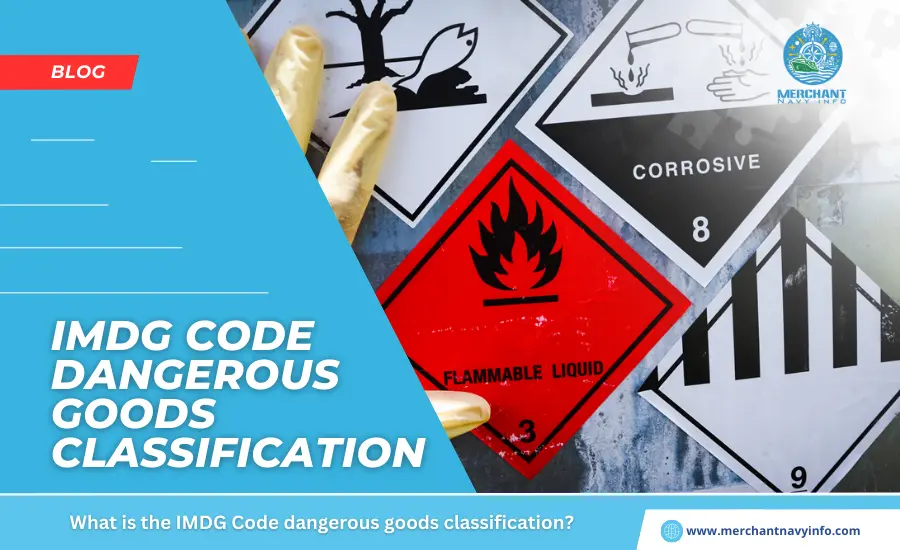
The International Code for the Carriage of Dangerous Goods by Sea, or IMDG Code, was adopted in 1965 under the 1960 SOLAS (International Convention for the Safety of Life at Sea) Convention under the IMO. Additionally, some provisions of MARPOL have been extended in his IMDG code.
IMDG regulations are updated regularly. The 2018 edition went into effect in 2020. However, the 2020 Code came into force on June 1, 2022, after a five-month delay due to the COVID-19 pandemic.
The purpose of the IMDG Code is to ensure the safe transport of dangerous goods and to prevent marine pollution of any kind while allowing the free and unrestricted movement of these goods. Another focus is protecting the marine environment and preventing pollution. Voluntary compliance with the Code began on January 1, 2019, and mandatory compliance with the Code began on January 1, 2020.
Exploring the Development of Uniform International Codes for Carriage
This was developed as a uniform international code for the carriage of dangerous goods by sea, including packaging, containerization and stowage. Special provisions apply. Emphasis is placed on the separation of non-conforming substances. This is a 2 volume set. Another volume 1 appendix focuses on fire and water leaks.
The IMDG code also ensures that goods shipped by sea are safely packaged. Dangerous goods laws are uniform and apply to all cargo ships worldwide. Dangerous goods are substances that are essential to the production of goods such as electronic equipment, cars, batteries, and medicines, are in huge demand, and account for a large portion of world trade.
What is the IMDG Code?
The Dangerous Goods Regulations were developed following the recommendations of the United Nations Panel of Experts on the Transport of Dangerous Goods in collaboration with the IMO (International Maritime Organization). The United Nations submitted this proposal in a report in 1956, and work on drafting the IMO-IMDG Code subsequently began in 1961.
As maritime transport experiences many developments and changes, it is important that the Code also adapts to change. For this reason, the IMDG code has undergone repeated changes. Amendments are proposed every two years, and the adoption of amendments takes place two years after the proposal is submitted by the relevant authorities. The proposed amendments are presented as follows:
- In my opinion, member states should submit the necessary proposals.
- A UN panel of experts will then consider and decide which of the upcoming amendment proposals deserve immediate attention.
Transport of Dangerous Goods
Transporting dangerous goods is a very sensitive issue. Therefore, many classifications of hazardous materials exist to avoid complications and problems in classifying aspects and levels of hazard. Hazardous materials are classified into nine sections. Dangerous Goods Labels and Hazardous Goods Certificates for cargo are issued according to the following nine sections:
Class 1 Applies to Explosives
The same classification includes six categories: substances with a high explosion risk and substances with a low explosion risk, such as aerosols and fireworks.
Class 2 Applies to Gases.
This section consists of three subcategories: nonflammable, highly flammable gases, and gases that are neither flammable nor toxic.
Class 3 Applies to Liquid
Flammable liquids, and there is no subdivision.
Class 4 Applies to Volatile Solids.
Three subcategories cover highly flammable solids, self-reactive solids, and solids that can generate toxic gases when interacting with water.
Class 5 Applies to Substances
that pose a risk of oxidation, such as B. Portable Tank.
Class 6 Applies to Pollutants
all types of pollutants, infectious substances, or substances that can cause harm.
Class 7 Applies
Specifically to radioactive materials.
Class 8 Applies to
Materials with a risk of corrosion and erosion.
Class 9 Applies to
Substances that cannot be classified under any of the above headings. H. Various dangerous goods, such as internal combustion engines, dry ice, etc.
Importance of the IMDG Code for Seafarers
All crew members employed on ships and directly involved with dangerous goods transported on board must complete the Hazardous Materials Course. You must complete a Hazardous Materials course based on the following: About STCW – Meet the requirements and prepare according to IMO guidelines. Some shore-based training centers offer hazardous materials training on how to handle IMDG cargo on board a ship.
Below are the important points that seafarers must understand based on the IMDG Code.
- Separation of hazardous materials and identification of correct shipping name for hazardous materials.
- You need to know how each IMDG shipment should be packed.
- You should understand the different types of markings, labels, or placards used to identify different hazardous materials.
- When using IMDG products to load and unload cargo units, you must be aware of the hazards and safe methods associated with these products.
- Seafarers need to understand the transport documents used for dangerous goods.
- How to handle hazardous materials during vessel navigation.
- Inspectors must conduct inspections as necessary to comply with applicable rules and regulations.
- Know the best procedures for extinguishing fires associated with hazardous materials transported by ship.
- Preparation of a hazardous materials storage/stowage plan taking into account the stability, safety and emergency preparedness of the vessel in the event of an unfortunate accident. Incident.
- Understand the importance of correct dangerous goods declarations for port management and land transport purposes.
The IMDG Code currently applies to approximately 150 countries around the world, and approximately 98% of ships meet its requirements. This figure helps us understand the effectiveness of this Code regarding the movement of hazardous materials across the ocean and the marine life found there.









